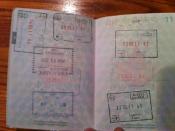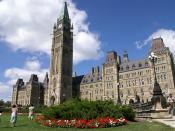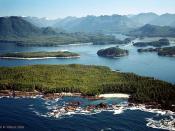The term aboriginal can be defined as a collective name for all of the original peoples of their country and their descendents. In Canada, they are separated into three groups: Indians, Inuit, and Metis. There is an aboriginal title given to these three groups, and it is based on their longstanding use and occupancy of the land as descendents of the original inhabitants of Canada. In 1876, the Indian Act was passed in the Canadian government, (The Battle for Aboriginal Treaty Rights) which set out certain federal government obligations, and regulated the management of Indian land reserves. Although this act was amended several times, most recently in 1985, and Section 35 of the Canadian Charter of Rights and Freedoms (Ibid) states that aboriginal rights and treaty rights were recognized and affirmed and makes it clear that treaty rights include rights that now exist by way of land claim agreements or that may be so acquired, the Canadian government and native groups still to this day, do not see eye to eye.
It is a battle over the land and its resources. The fight has taken place on the land, in the courts and in the media. When government and native groups signed treaty agreements over a century ago, neither side imagined the repercussions. Canada's native people say treaties have been ignored and their rights -- from logging trees to fishing eels -- have been limited. (Ibid) Aboriginal peoples' frustrations have boiled over so much that in the 1980's especially, they set up barricades and roadblocks and organized protest marches against the government, claiming they had been mistreated and ignored in the eyes of the government. For aboriginal people, there is an important reason for their resentment towards the federal government, as the land was a part of their identity as...


